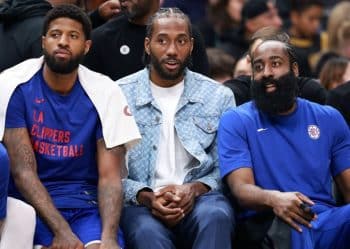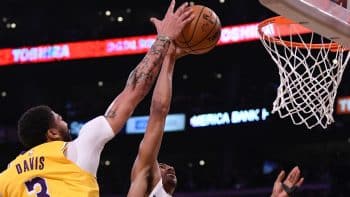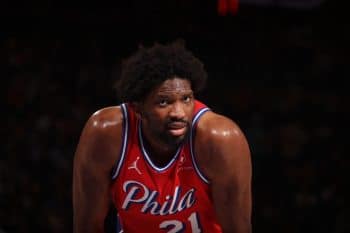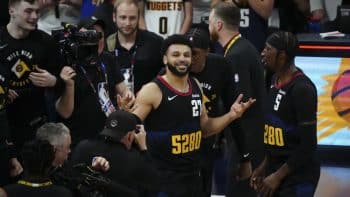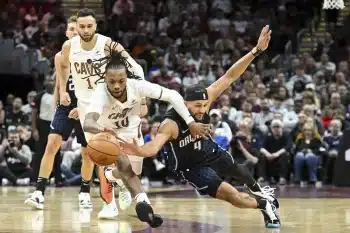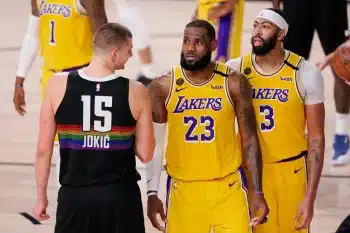NBA
Atlanta Hawks 2017-18 Season Preview
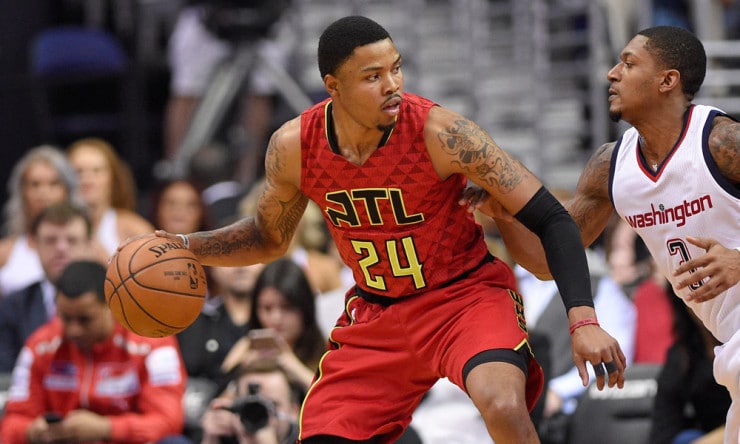
After 10 consecutive seasons of reaching the playoffs, the Atlanta Hawks have hit the reset button and are at the beginning stages of what promises to be a long-term rebuilding project. In recent years the Hawks have been powered by All-Star performers Al Horford, Jeff Teague and Paul Millsap. All three players are now in more promising situations. Teague is the presumed floor general on a revamped Minnesota Timberwolves roster, the Boston Celtics are relying on Horford to help lead them into title contention and Millsap joins an emerging Denver Nuggets franchise filled with promising young talent. The Hawks usher in a new era with a new general manager, Travis Schlenk, at the helm and expecting more production than ever from starting point guard Dennis Schroder. The Hawks have put together a scrappy bunch but will enter the 2017-18 campaign with major losses from last season and even less experience. Expect the team to battle opponents tough each and every night, but the franchise has work to do before returning to the land of the playoffs.
FIVE GUYS THINK…
From a playoff team to potentially the league’s basement, the Atlanta Hawks enter this season in a complete rebuild mode.
Following the departure of Paul Millsap this summer, the Hawks officially lost the final piece of the Millsap-Al Horford-Jeff Teague-DeMarre Carroll-Kyle Korver squad that won 60 games in 2014-15. After spending the last few seasons battling for playoff position, Atlanta will be in the uncomfortable position of battling for draft lottery position instead.
With no real discernible star talent currently on the roster, it would probably behoove the Hawks to set their sights on the upcoming draft where the consensus around the league is the top half of the lottery will be plenty talented. Of course, monitoring the development of rookie John Collins and continuing to bring along Dennis Schroder is still plenty important for Atlanta. Nevertheless, this year will certainly be far from a playoff year for the Hawks.
5th place — Southeast Division
– Dennis Chambers
Sadly, the Hawks seemed to have embraced the fact that being in the middle is the very worst place to be in the NBA. After an impressive string of playoff appearances, the Hawks seem more likely set on a run through the lottery than another run through the post-season meat grinder. With new leadership in place, the Hawks look like a team with a tough season ahead of them. It’s possible their young guys blossom under great coaching, but it looks like likely that this season is going to be a tough one.
5th place — Southeast Division
— Steve Kyler
The Atlanta Hawks made the decision to restructure the front office rebuild its roster this offseason. Not returning from last season’s squad includes players like Paul Millsap, Dwight Howard, Thabo Sefolosha, Tim Hardaway Jr., Jose Calderon and Ryan Kelly. The Hawks are now surely focused primarily on developing its young players like Taurean Prince and DeAndre’ Bembry while maintaining financial flexibility and making opportunistic deals to acquire more future assets. Mike Budenholzer, who gave up his role as the president of basketball operations this offseason, resisted undergoing a full rebuild for arguably too long and now will have to embrace a down season for the first time as the head coach of the Hawks. Budenholzer is one of the better coaches in the league, but now we’ll get the chance to see how he responds and performs in a rebuilding environment. How he does this upcoming season could have a big impact on how quickly things turn around in Atlanta.
4th Place — Southeast Division
— Jesse Blancarte
By letting Paul Millsap walk in free agency and trading away Dwight Howard, the Hawks have loudly announced their intentions for the 2017-18 season. With only a few NBA starter-level players left on the roster in Dennis Schroder, Kent Bazemore and perhaps a couple others, Atlanta should be tank city this year in the East. The primary goals this year will be development of the young talent on the roster: Taurean Prince, Tyler Dorsey, John Collins and DeAndre’ Bembry. Figuring out which of these guys fit with the Schroder-Bazemore core is priority one in a season where actual wins should be very tough to come by.
5th Place — Southeast Division
— Ben Dowsett
All good things must come to an end, and the playoff streak of the Atlanta Hawks is no exception. Believe it or not, the Hawks have qualified for the playoffs for 10 consecutive seasons, second only to the San Antonio Spurs (they’ve done it for an amazing 20 years in a row).
Sadly, this season will probably mark the end of the line.
Sure, Mike Budenholzer is a great coach. He led the club to 60 wins just a few shorts years ago and won the NBA’s Coach of the Year Award after they began the 2014-15 season with minuscule expectations, but three of the team’s top six scorers from last season have moved on, including the leading scorer and All-Star in Paul Millsap.
The Hawks are somewhat reminiscent of the Indiana Pacers. Players like Dennis Schroder, Kent Bazemore and Taurean Prince are great pieces to complement three more gifted players, but a team built around secondary contributors probably isn’t good enough to compete for anything meaningful, not even in the Eastern Conference.
In the end, I do expect the Hawks to overachieve, but for this bunch, that probably means winning somewhere in the neighborhood of 30 games, and I don’t think that’ll be enough to escape the cellar of the Southeast Division. It almost certainly won’t be enough to qualify for the playoffs.
5th place — Southeast Division
— Moke Hamilton
TOP OF THE LIST
Top Offensive Player: Dennis Schroder
As talented as Schroder is, most would agree that he would be best suited to be a second or third option on a playoff bound team. However, for the 2017-18 Hawks, the team’s offense will begin and end with him. The fifth-year guard averaged 17.9 points, 3.1 rebounds and 6.3 assists last season on 45 percent shooting from the floor, showing tremendous growth while being entrusted with a larger role.
There’s a lot to like about Schroder. The guard has proved to be extremely durable since entering the league, missing only missed 10 games over the past three seasons. Schroder has also increased his scoring, rebounding and assist production in every campaign since his rookie season. He is primed to increase productivity in all of these categories this season without the presence of Millsap and former All-Star center Dwight Howard in the fold.
Top Defensive Player: Taurean Prince
The Hawks had four players ranked in the top 40 of ESPN’s real plus-minus defensive ratings last season. Three of the four – Howard, Millsap and Thabo Sefolosha – are now playing elsewhere. The fourth, Taurean Prince, remains on the roster and should make an even bigger leap next season.
Prince has the size and athleticism to guard at least three positions effectively. Playing acceptable defense at the NBA level is one of the toughest aspects of the pro game for younger players to grasp and Prince made an immediate impact as a rookie – despite limited playing time early on.
The Hawks will likely expect Prince to guard opposing teams’ top perimeter player next season. Prince finished fifth in the league among small forwards in the plus-minus rankings ahead of more prominent players such as LeBron James, Giannis Antetokounmpo and Kawhi Leonard. Obviously, Prince doesn’t have the offensive responsibilities the aforementioned three players have but he is positioned strongly to make improvements with a year under his belt.
Top Playmaker: Dennis Schroder
Schroder is unquestionably the Hawks’ floor general and top playmaker as the roster is currently constructed. While there are valid concerns about Schroder’s penchant for erratic ball control and turnovers (3.3 per game in 2017), the fifth-year guard managed to average 7.2 assists per game on a per 36 minute basis last season.
Schroder will be asked to score more this season and will enter the campaign without proven scorers such as Howard, Millsap and Tim Hardaway Jr. as options for the assist, but the Hawks’ offense is predicated on spacing and ball movement while exploiting defensive holes. Schroder finished second in the league in drives into the lane last season and is one of the elite penetrators in the game today. The ability to get into the paint and create havoc will continue to open up passing windows and create easy scoring opportunities for teammates. With the Hawks lacking many players on this roster that can create their own offense off the bounce, Schroder will be under even more pressure to deliver and keep the offense flowing.
Top Clutch Player: Kent Bazemore
For clarity, we’re defining clutch as the game point differential being five points or less with five minutes remaining in the fourth quarter — whether the team is ahead or behind.
The Hawks had multiple players perform above average in the clutch last season. Departed shooting guard Hardaway Jr. was one of the league’s best two guards in late game clutch situations in 2017 and most of the Hawks’ offense in these situations flowed through Millsap. Both are gone.
Logically, we could easily assign this to Schroder, but the fifth-year guard will likely be the focal point of opposing defenses this season and double-teamed at every opportunity. The Hawks will need someone else to step up and hit late game shots.
Incoming shooting guard Marco Belinelli sank 50 percent of his three-point shots in clutch situations last season, so he’s a sneaky option in the Hawks’ offense which is based on spacing. However, Kent Bazemore may be the man for the job. To be clear, Bazemore was abysmal last season in these situations. Bazemore shot just 38 percent from the field and 31 percent from three-point range last season in similar situations. To make matters worse, Bazemore only connected on 46 percent of his attempts from the charity stripe.
But let’s assume the 2016-17 season was an outlier. In 2015-16, Bazemore shot 46 percent from the floor and 46 percent from three-point range while connecting on 92 percent of his attempts from the free throw line.
Will the real Bazemore please stand up? We believe a return to late game form, for Bazemore, is on the horizon.
The Unheralded Player: Ersan Ilyasova
Ilyasova won’t win any popularity contests, but he has proven to be a very consistent performer throughout his career. Think about this: Ilyasova has averaged at least 10 points per game in seven out of nine pro seasons, including the past six years despite never averaging more than 28 minutes in any campaign.
For his career, Ilyasova has averaged 16.2 points per 36 minutes on the floor. The biggest drawback to Ilyasova is his defense, which is a liability. But to end things on a positive, Ilyasova has shot at least 36 percent from three-point range in five of the past six seasons, a trend that should continue in 2018.
Best New Addition: Dewayne Dedmon
Rookie John Collins received plenty of consideration here (and we’ll get to him in a minute), but Dedmon also has a decent amount of upside. Dedmon averaged 5.1 points and 6.5 rebounds last season in San Antonio. Those numbers look pedestrian until you consider he only received 18 minutes of action per night. On a per-36-minute basis, his numbers jump to double-double territory over the past two seasons with the Spurs and Orlando Magic (sample size: 134 games).
Dedmon has played behind Nikola Vucevic and Pau Gasol the past two seasons so there’s a legitimate reason why the minutes have been scarce. The Hawks signed Dedmon to a two-year $12.3 million deal this summer with a player option for the 2018-19 campaign. With Howard traded to the Charlotte Hornets, Dedmon should enter training camp with the starting center position his to lose.
— Lang Greene
WHO WE LIKE
1. Travis Schlenk
The Hawks announced the hiring of Schlenk as their new general manager and head of basketball operations in May. Schlenk spent the past 12 seasons in the Golden State Warriors’ front office, with the last five serving as assistant general manager. This means Schlenk was a valuable part of the Warriors brain trust that constructed one of the best rosters in the game today.
That’s intriguing for sure, but the reason Schlenk makes this list has been his ability from day one to make the tough call. The first decision was to completely revamp the team’s roster. Then the club drafted rookie John Collins. In free agency, the team could have opted to give Millsap, a four-time All-Star, a maximum contract extension worth over $100 million. Schlenk didn’t. The Hawks could have matched the New York Knicks four-year $71 million deal for Hardaway Jr., a restricted free agent. Schlenk allowed him to walk. The franchise could have attempted another year with Howard manning the interior, but Schlenk dealt the former Defensive Player of the Year to Charlotte.
This will be a long rebuilding process, but Schlenk appears to have a clear direction in mind. Keep cap space flexibility, evaluate young talent and protect draft picks.
2. John Collins
The former Wake Forest University product was selected by the Hawks with the No. 19 overall pick in the 2017 draft. Collins quickly turned heads in Las Vegas this summer and was named to the NBA Summer League first-team after averaging 15.4 points and 9.2 rebounds on 59 percent shooting from the field.
Collins was Schlenk’s first draft pick at the helm of the franchise and the big man produced more than a few flashes of explosiveness. Collins’ defense and passing are two question marks heading into his rookie season, but those two traits plague many a young player entering the association.
3. Mike Budenholzer
Budenholzer has compiled a 189-139 (.576) record in four seasons pacing the sidelines in Atlanta. All four of those campaigns resulted in a trip to the postseason. The 2017-18 season will undoubtedly be Budenholzer’s stiffest test as a head coach. The Hawks have a proven system but no longer feature All-Star level talent at key positions. It’s hard to imagine a Budenholzer team not playing with grit and determination, so effort won’t be the problem.
One area where Budenholzer has excelled since joining the franchise is talent development. DeMarre Carroll, Kyle Korver, Bazemore, Hardaway Jr., Millsap and Schroder all took their games to the next level under Budenholzer. Who will be the next player that benefits from Budenholzer?
— Lang Greene
SALARY CAP 101
The Hawks are still under the NBA’s $99.1 million salary cap, with up to $5.0 million to spend. Quinn Cook’s salary guarantee will increase from $100,000 to $500,000 if he’s still on the roster by opening night. Luke Babbitt has an even healthier promise with $987,080 of his $1.5 million locked in. Atlanta also has its $4.3 million Room Exception still available.
The team needs to decide on 2018-19 options for Taurean Prince and DeAndre’ Bembry before November. Looking ahead to next summer, the Hawks can get under the cap by roughly $36 million – assuming both Dewayne Dedmon and Mike Muscala opt out of their respective options of $6.3 million and $5.0 million. Currently, Kent Bazemore is Atlanta’s highest-paid player at $16.9 million for the coming season.
— Eric Pincus
STRENGTHS
The Hawks are entering into uncharted territory they haven’t experienced in over a decade. On most nights the team will enter an arena as an underdog. One of the strengths this unit has is their athleticism and youth. While youth laden teams don’t typically rack up wins, the Hawks current situation will provide the organization with an opportunity to evaluate the future. Collins, Prince and DeAndre’ Bembry could be potential building blocks. Prince could develop into a fine two-way player, while Collins should be in the nightly rotation playing bigger minutes near the All-Star break (if not sooner). Throw in Schroder, who hasn’t reached his ceiling, and Dedmon with an opportunity to finally earn big minutes, the Hawks have a lot of young and motivated guys with something to prove.
— Lang Greene
WEAKNESSES
The team’s frontcourt depth, specifically at power forward and center, is extremely thin. The collection of Ilyasova, Mike Muscala, Collins, Dedmon and Miles Plumlee have never been entrusted to play major minutes at any time in their respective pro careers. Outside of Ilyasova, none of these guys have put together a season averaging at least 10 points per game. That’s just looking at scoring. None of these players have averaged more than seven rebounds in any of the past three seasons. Of course this trickles down to rim protection, where the team will struggle on a nightly basis. For all of Howard’s issues (and steady decline), he always demanded some respect in the paint from opposing teams. This year’s unit will have to earn theirs.
— Lang Greene
THE BURNING QUESTION
How will Dennis Schroder handle the increased workload, scrutiny and pressure?
Schroder successfully transitioned from top reserve to full-time starter last season in a pretty seamless manner. But now the fifth-year guard will be the team’s focal point and unquestionable best player. Previous security blankets such as Horford, Millsap and Teague are gone. This is Schroder’s show, Schroder’s time to shine. But how will he handle the increased pressure? Many a man has been humbled by moving from the co-pilot to the pilot’s seat. All eyes will be on Schroder until Schlenk and the front office bring in the cavalry.
— Lang Greene
